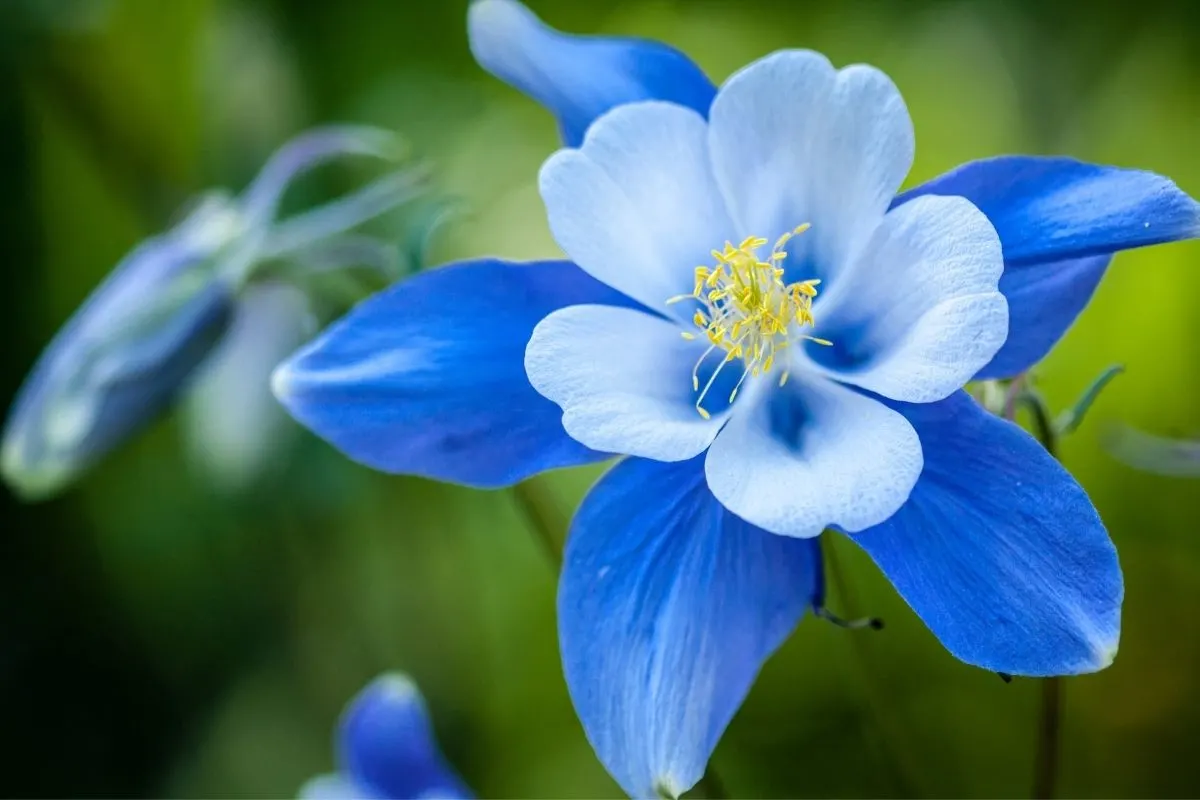Blue flower vine plants, renowned for their captivating blooms and versatile applications, have captivated gardeners and nature enthusiasts alike. Embark on a journey to discover the enchanting world of these botanical wonders, from their diverse species and cultivation secrets to their ornamental and medicinal uses.
With their captivating azure blossoms, blue flower vine plants are a sight to behold. These climbers grace trellises, fences, and hanging baskets, adding a touch of elegance to any landscape. But beyond their aesthetic appeal, these plants also possess medicinal and culinary properties, making them a treasure for both gardeners and herbalists.
Blue Flower Vine Plant Species

The botanical world is adorned with a myriad of captivating blue flower vine plants, each boasting unique characteristics and enchanting blooms. These vines belong to diverse botanical families, adding to the rich tapestry of plant life.
One of the most well-known blue flower vine plants is the Morning Glory (Ipomoea species), belonging to the Convolvulaceae family. Its vibrant, trumpet-shaped flowers unfurl in a kaleidoscope of blue hues, from delicate sky blue to deep indigo. The Morning Glory is a fast-growing vine, eagerly climbing trellises and fences, adding a touch of vibrant color to any garden.
Another notable blue flower vine is the Wisteria (Wisteria species), a member of the Fabaceae family. Its cascading racemes of fragrant, pea-like flowers create a breathtaking spectacle in the spring. Wisteria vines are vigorous growers, requiring ample support to showcase their cascading blooms.
The Plumbago (Plumbago species), belonging to the Plumbaginaceae family, is a tropical vine known for its clusters of delicate, sky-blue flowers. Its evergreen foliage adds a touch of year-round greenery, while its prolific blooms attract pollinators.
The Clematis (Clematis species), a member of the Ranunculaceae family, offers a wide range of blue flower varieties. From the deep blue blooms of Clematis ‘Jackmanii’ to the pale blue flowers of Clematis ‘Perle d’Azur’, these vines add vertical interest and color to gardens.
These are just a few examples of the diverse blue flower vine plants that grace our world. Each species brings its own unique charm and beauty, adding a touch of vertical allure and vibrant color to gardens and landscapes.
Cultivation and Care of Blue Flower Vine Plants

Cultivating and caring for blue flower vine plants requires specific growing conditions, soil preferences, and maintenance practices. Understanding these factors is crucial for successful growth and vibrant blooms.
Optimal Growing Conditions
Blue flower vine plants thrive in warm, humid climates with ample sunlight and well-drained soil. They prefer temperatures between 65-85°F (18-29°C) and indirect sunlight for several hours daily.
Soil Requirements
These vines require well-drained, fertile soil rich in organic matter. A mixture of loam, compost, and peat moss provides an ideal growing medium. The pH should be slightly acidic, between 5.5 and 6.5.
Watering Schedule
Water the plants regularly, especially during hot, dry weather. Allow the soil to dry slightly between waterings. Overwatering can lead to root rot, while underwatering can stunt growth and reduce flowering.
Pruning Techniques, Blue flower vine plant
Pruning is essential to maintain the shape and encourage flowering. Prune the vines regularly to remove dead or damaged stems. Cut back overgrown stems in the spring or fall to promote new growth and flowering.
Fertilization Methods
Fertilize the vines monthly during the growing season with a balanced liquid fertilizer. Use a fertilizer with a ratio of 10-10-10 or 12-12-12. Avoid over-fertilizing, as it can burn the roots.
Uses and Applications of Blue Flower Vine Plants

Blue flower vine plants are prized for their ornamental value and are commonly used in landscaping. Their vibrant blooms and trailing foliage add a touch of color and elegance to gardens, parks, and other outdoor spaces.
Ornamental Uses
- Trellises: Blue flower vines are ideal for covering trellises, creating a vertical tapestry of blooms. Their twining stems easily cling to the latticework, forming a dense and attractive display.
- Fences: Vines can soften the look of fences, adding privacy and visual interest. Their cascading foliage and colorful flowers create a charming and inviting atmosphere.
- Hanging Baskets: Blue flower vines are perfect for hanging baskets, cascading over the edges and creating a vibrant spectacle. They add a touch of color and movement to patios, balconies, and porches.
Medicinal and Culinary Applications
Certain blue flower vine species also possess medicinal and culinary properties. For instance, the morning glory (Ipomoea purpurea) has been traditionally used in herbal medicine to treat various ailments, including headaches, skin conditions, and digestive issues. Some species, such as the blue pea flower (Clitoria ternatea), are edible and are commonly used as a natural food coloring in Southeast Asian cuisine.
